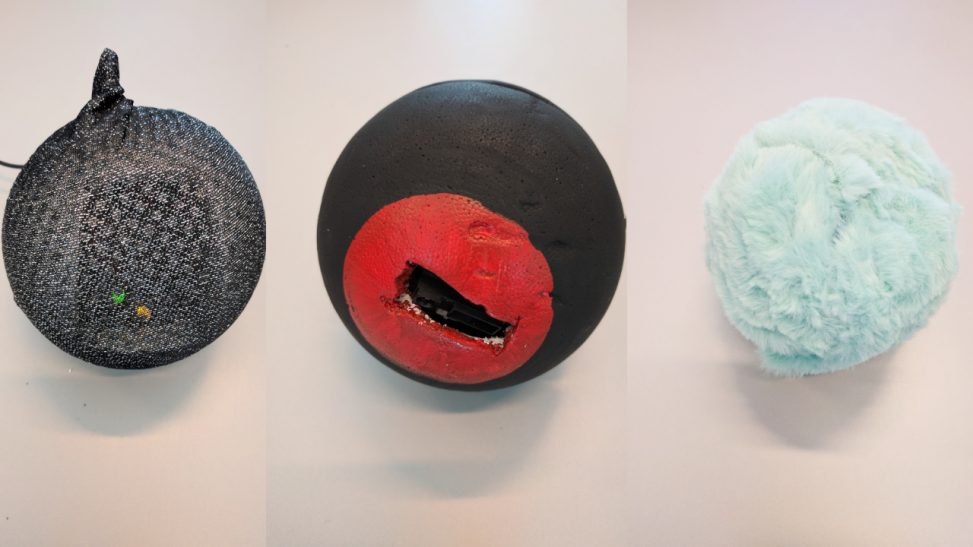A prototype of a modular hybrid toys concept where each sphere contains different interactions based on various senses.
Role: Interaction Designer
We designed a set of toys that that is not targeted only to children, but rather targeted to anyone who has a playful mind. The project was part of a course in Play Design and it was two weeks under development. My role was to design and build up those toys in collaboration with the other four member of my team.
The first concept we prototyped was the TamaToi with visual output. The prototype was designed to use the rotation of the TamaToi as an input and light the LEDs that are on the TamaToi as an output. The LED prototype is about actions, as we wanted the LEDs on the TamaToi to light up faster the more you rotate and shake it. With its light metallic cloth, the LEDs are visible through the cloth, creating a feeling of uncertainty. It gives an impression of a more obscure object and a feeling of a mysterious object that you need to interact more with in order to know what does it do.
The second TamaToi we prototyped produces sound as output. We designed the TamaToi to use an infrared proximity sensor in order to measure the distance the “eye” of the toy has from objects. The microcontroller uses that distance to determine the pitch that should be produced. As a result, the ball will produce various sounds when rolled on the surface. This was designed in order to create playful interactions with the TamaToi. Unlike the LED TamaToi, the Sound TamaToi affords interactions that are creative in their nature. The infrared proximity sensor allows the user to use their hand or some other object to control the pitch of the sound and create a melody. The interaction is controllable, allowing for creative interaction to arise. At the same time, the digital components enhance the activity of rolling – using the same principle as the LED TamaToi – since the sensor will detect its proximity with the surface, resulting into unpredictable sounds being produced. This prototype is about exploring and discovering the personality of the toy. The sensor tries to simulate an eye, which will react to what is in the proximity of the TamaToi.
The third and last prototype we developed operates by using haptic input from the user in order to vibrate as an output. Piezo sensors were used to read the pressure that is applied on the surface of the toy, which activates the motor that is build inside the toy. As a result, when the user rolls the ball on a surface, that pressure alone will activate the motor, and thus creating unpredictability regarding the path that the toy will follow. This was designed in order to create a playful interaction with the toy when it is rolled. The vibration again enhances the activity of rolling. Unlike the previous two prototypes, this one actively alters the activity of rolling. The previous ones were based on sensory stimulation, while this one – in addition to simulate touch due to the vibration feedback – the vibration itself alters the already established activity of rolling and throwing, by making the path of the TamaToi unpredictable, thereby giving it agency. The unpredictability will create an interaction similar to what the user would have when playing with bouncing balls, and trying to predict their path.

Leave a Reply